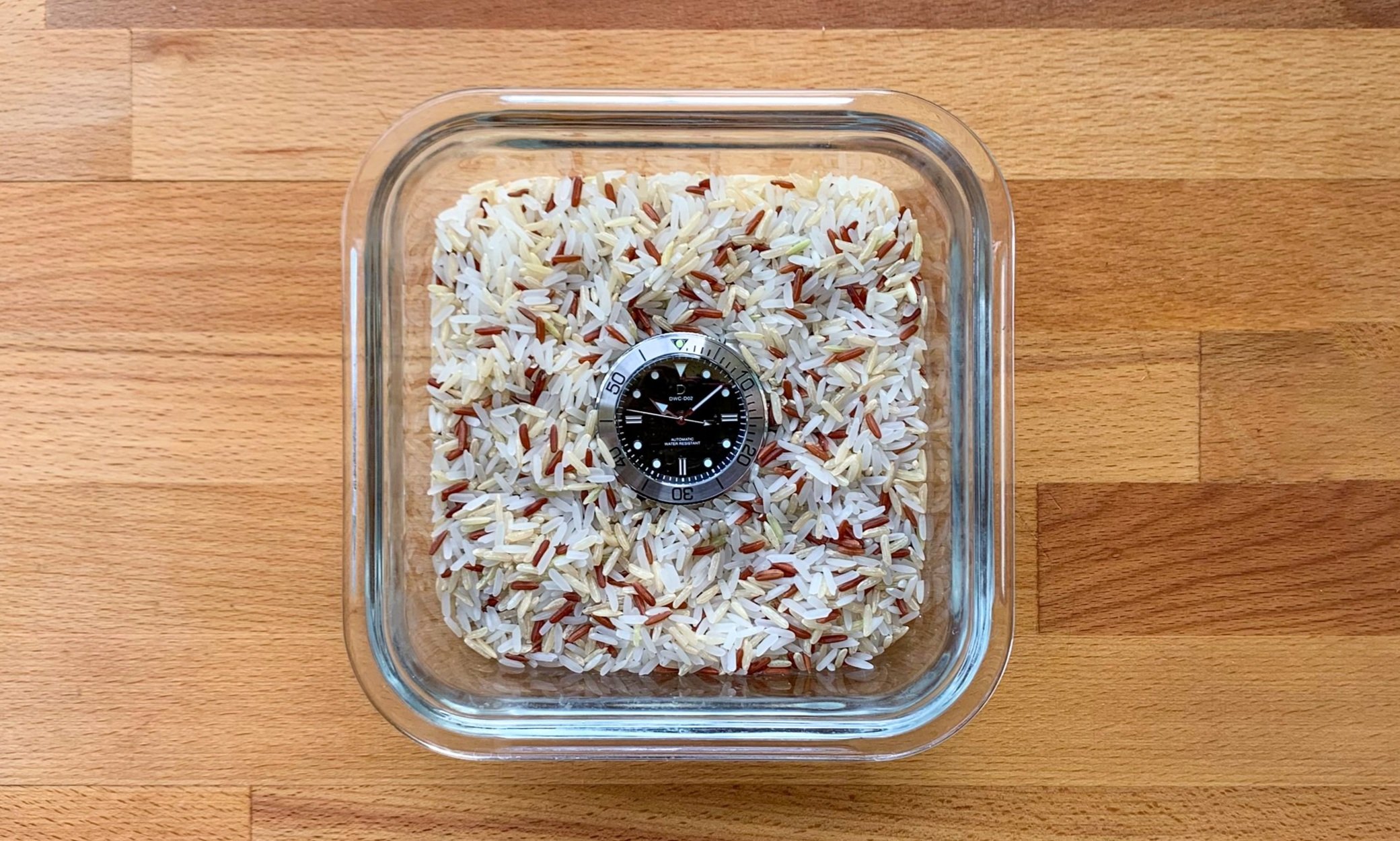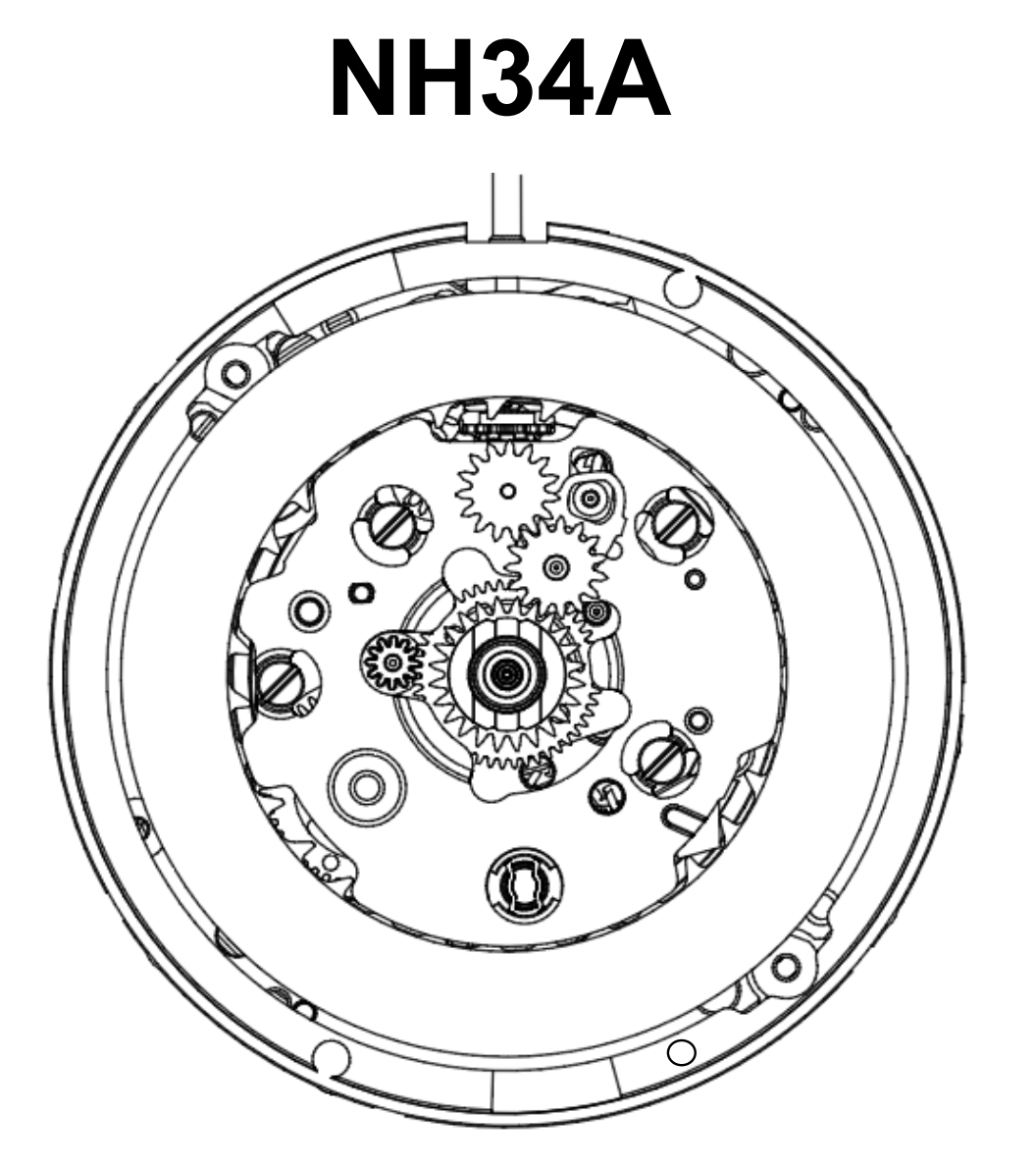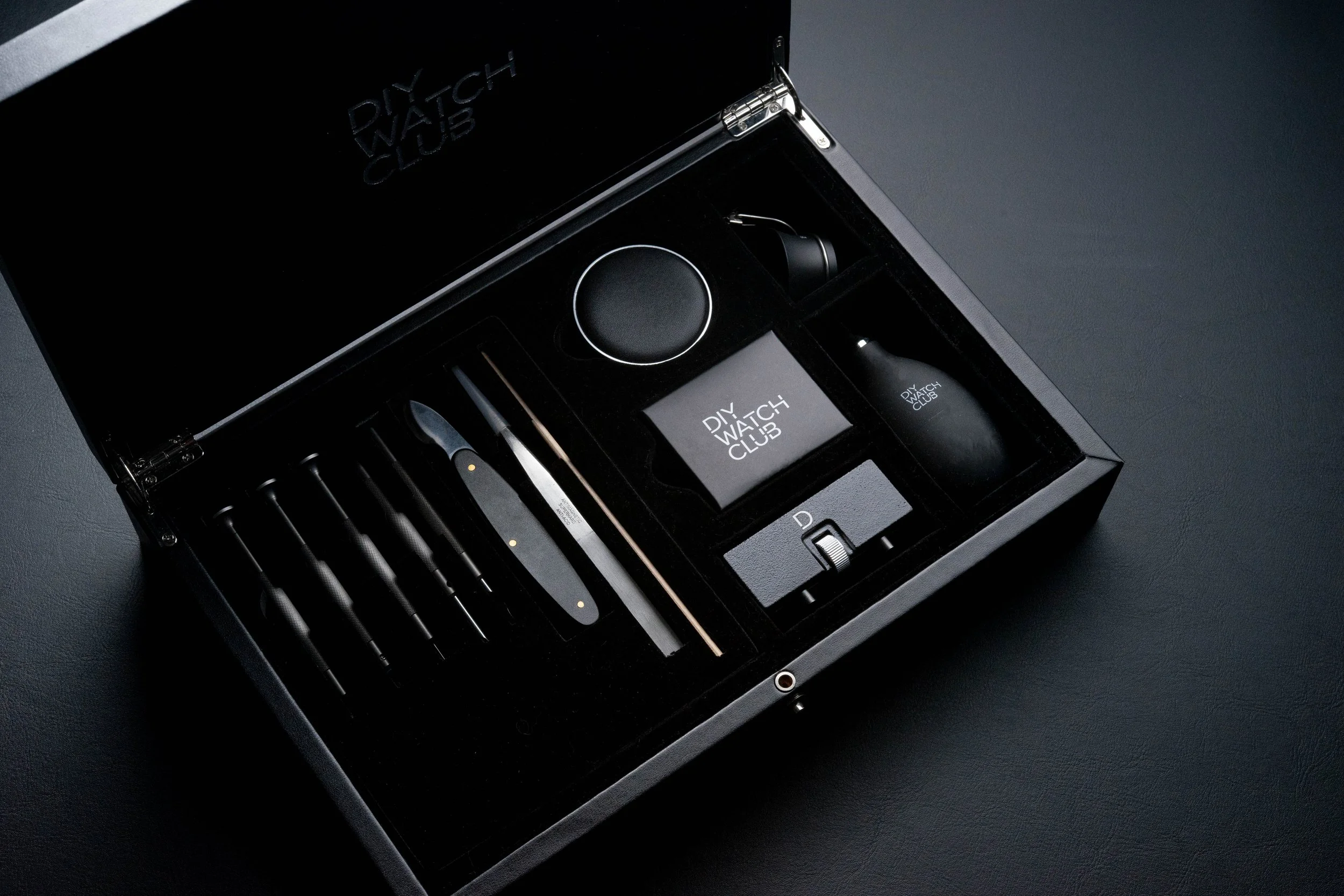Avoiding Water Damage: When Your Watch Gets Wet or Fogs Up
A troubleshooting guide to fix water leaks in watches
Put a watch in a closed container of rice or desiccant to draw out the moisture.
Watch got wet and stopped working? It is definitely not a good sight when you discover moisture inside of your favorite watch. You try to recall the last time you took a plunge in the pool or showered with your watch and how it happened. You panic. Your favorite watch is in danger. Isn’t it supposed to be waterproof? In some cases, you weren’t even near any water! But relax, these things happen, and it is quite a fixable problem. So read on and find out how you can fix it when water gets into your watch!
Here’s a breakdown of how moisture or water droplets get into our watches and how we can remove the water intrusion or condensation before water damage happens to your watch.
Water Damage Signs to look out for
First things first, inspect the watch. The symptoms will tell you its degree of seriousness.
Trapped moisture inside the watch case.
The watch crystal fogs up
This scenario could happen when you exit a mall and a temperature change happens drastically, much like eyeglasses fogging up when exiting a cold room into a hot room, or simply when you wear your watch, as your body heats up the watch. The fog is condensation formed on the underside of the crystal. This indicates that there is moisture trapped inside the watch, probably during assembly, and does not necessarily point to a leakage.
There are water droplets in the watch
If you see water droplets, that could mean that a leakage might have occurred. Perhaps you might have gone swimming or washed your hands earlier in the day. There could be a possibility of a leakage in your watch. To be sure, you can use a water tester. We made a blog post and video on this and you’ll learn how watches reach the point of leakage.
How to Check Where Water is Leaking
Most watches come with multiple gaskets that help to resist water from getting in the case and possibly damaging the movement. The most common point of failure is the crown and the gasket, with a rarer occurrence on the crystal gasket. Check that these gaskets are intact and in place.
Take the case back O-ring for example, the ring should be sitting on a groove. It could be displaced outside the groove during assembly, and the water resistance capability would be compromised. Check the case back and where this gasket is sitting.
O-ring gasket (the black near the edge of the case) sitting on the groove of the watch case.
Check also if the case back is screwed tight. Best way to check this is if there is a visible gap between the case and the case back.
As for the other gasket located on the crown, make sure the crown is pushed all the way in before it comes into contact with water. NEVER turn the crown, whether it’s pushed in or not, when the watch is under water. Best practice is to screw down the crown in a dry environment away from any water.
Visible crown gasket
Hidden crown gasket (the black ring at the end of the screw thread)
The crown gasket can be visible on the post or hidden inside the crown. Sometimes the gasket is located on the crown tube on the case. Any way it is, check that it is in place, or whether there’s rubbery debris that could be broken off gasket around the crown. If you can’t find the gasket, don’t worry. Crown structure varies so it might simply be a case of a hidden gasket.
The gaskets can also be too old for their jobs. An old gasket loses its elasticity, and needs replacement. This is when the watch needs to be serviced.
Check also the Water Resistance rating of your watch. You might have unknowingly used the watch above its WR rating (3ATM doesn’t mean you can take the watch to under 3 meters of water). If you aren’t too sure, you can read more about watch water resistance rating here.
How to Fix a Water Damaged Watch
So what can you do to fix this problem? Well the solution depends much on the symptoms. If it is simply fogging up, that means moisture is trapped in the case and probably no leakage is present, or, if you cannot open the case back, try putting the watch in a bag of rice or desiccant to draw out the moisture. Leave them in the bag for about two to three days for better results. If that doesn’t work, you can open the case back to let it air out in a dry place or use a fan to help out, then close the case back.
If it is water droplets or heavy water intrusion that you find in the watch, that’s quite possibly a sign of leakage. Leakage can be due to, 1. mishandling of the watch, by far the most frequent reason, and 2. structural failure.
An example of silicone grease: Bergeon 4509 Watch case and crowns sealant
To avoid mishandling the watch, you can try the following:
Push the crown in before going into water, and never turn the crown under water,
Do not use the watch above its WR rating.
To fix structural failure, you can try the following:
Make sure you screw down the case back tight with a functioning gasket in place, and the crown with a functioning gasket pushed in or screwed in.
Try lubricating the gaskets with a silicone grease. A tiny drop will do. Avoid using petroleum based lubricants like WD-40. That’ll just ruin and melt the gaskets.
If all else fails, your watch may be in need of a servicing and having its parts replaced. Have your watch checked at your local repair shop.
How to Prevent Water Leakage
Bad things happen. To avoid water damage to your watch, it’s good to have a mental checklist whenever you’re wearing your watch. Not sure if your watch is water resistant? Best to remove it before diving into a pool. And make sure the crown is screwed all the way down. Regular service also helps to keep your watch at optimal water resistance capability.
And that’s how you deal with a wet or fogged up watch.
















Blued hands and screws are ubiquitous existences in the history of watchmaking. Behind that frequent appearance though is a history and science that go beyond the aesthetic value of flame bluing.